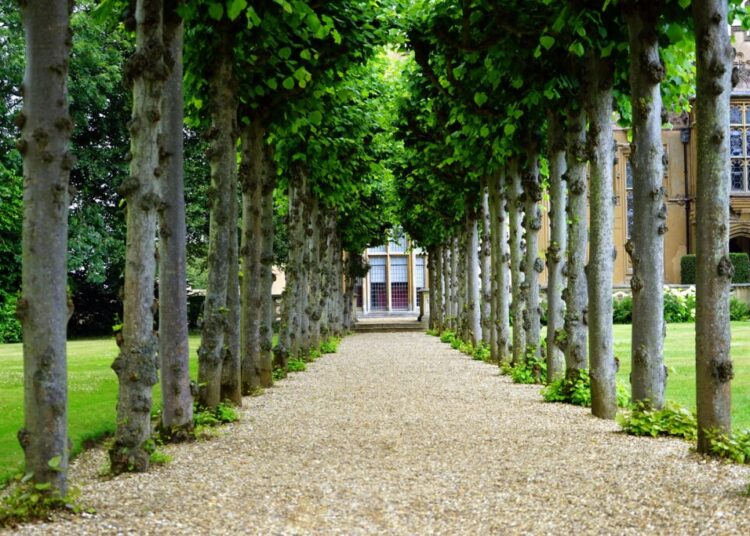The allotment garden year begins with Howard’s hazel poles while early risers keep us company. Spring, the time to build garden supports for sweet peas, peas, and climbing beans. Howard has his hands on a beautiful bundle of hazel from his local spoon carving community.
There are tall, sturdy stakes for supporting the pole beans (we’ll be growing blue Blauhilde and an Italian yellow variety). There are also shorter, thinner sticks for peas and flowers (mostly heavily scented Spencer sweet peas from specialist supplier Roger Parsons) as well as the thinnest twigs to be threaded in between.

We gather on an early March Sunday morning. The spring sun is rising, the wet weather has finally relented, although our allotment daffodils are still stunted and under attack from birds. It’s still a bit early to sow directly into the ground, so I’ve ordered some seed modules to get ahead. We stand there taking it all in, discussing where to place the stakes, although the size of the plot largely dictates where they will go. I carry a 3 kg ball of coconut twine – be careful what you wish for – from a specialist garden supplier. My Christmas present to myself will likely last as long as I do.
Howard sharpens the heavy sticks with a hand axe while I set up the sweet pea tepees. I select the thinnest horizontal branches for the tendrils to cling to. I tie the tips together with coconut twine. March is the time when the plot transitions from late winter to early summer. From horizontal to vertical. From 2D to 3D. It’s still a bit early to sow directly into the ground, so I’ve ordered some seed modules to get ahead. For now, they’re just for sweet peas and later for Thai red corn.

It’s just the two of us here for a few hours. A woodpecker drums on a nearby tree. Robins and a shrill jay fly past. By the time we leave, four tipis stand ready for an early summer and the germination of seeds. And what about your garden planning?













Discussion about this post